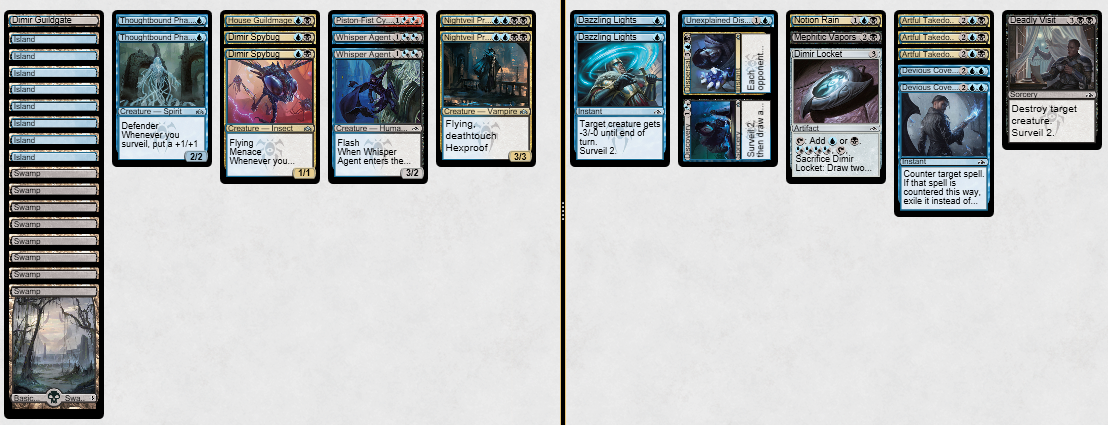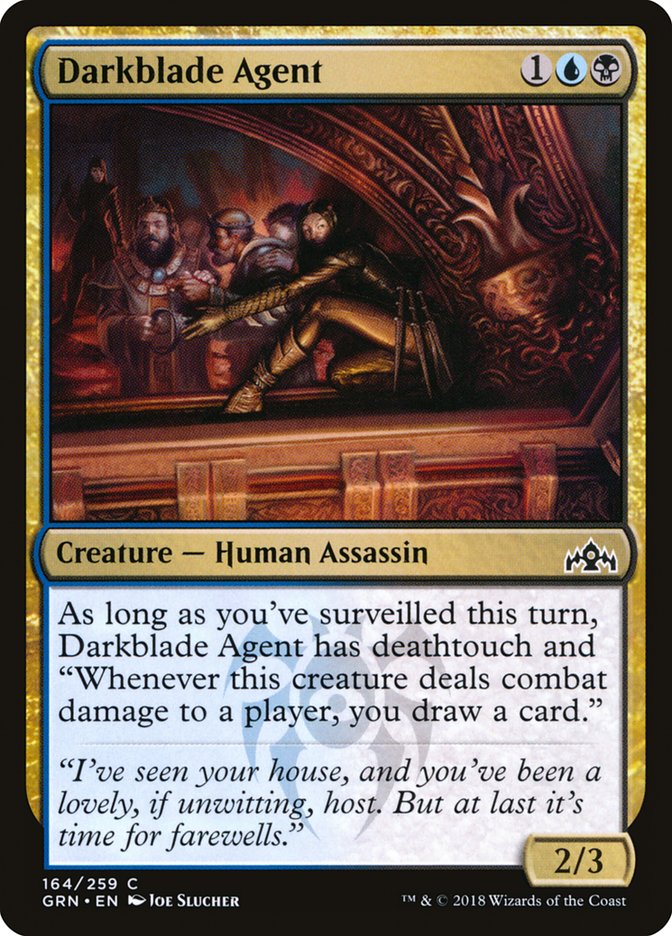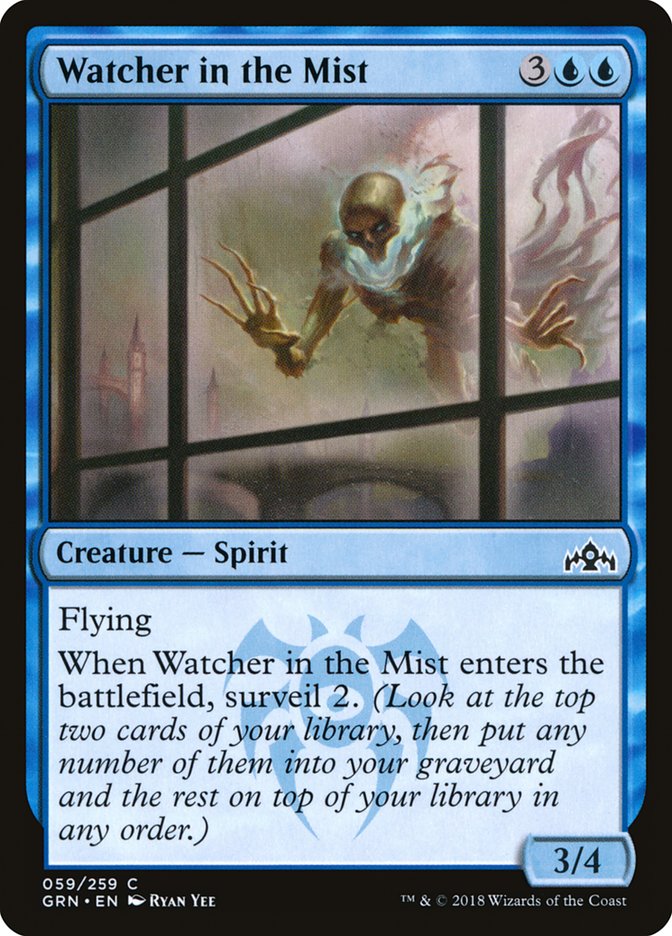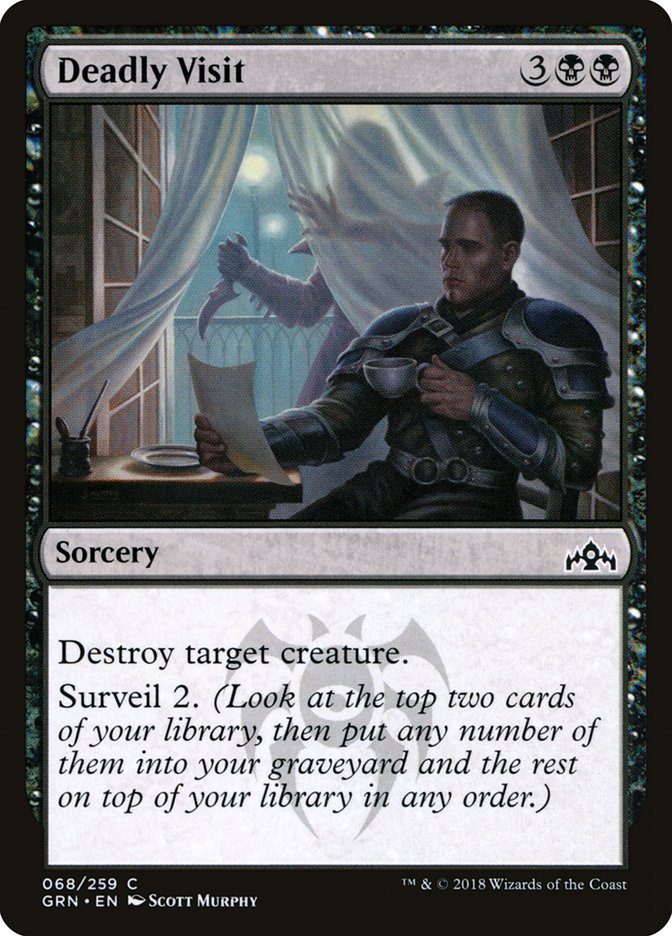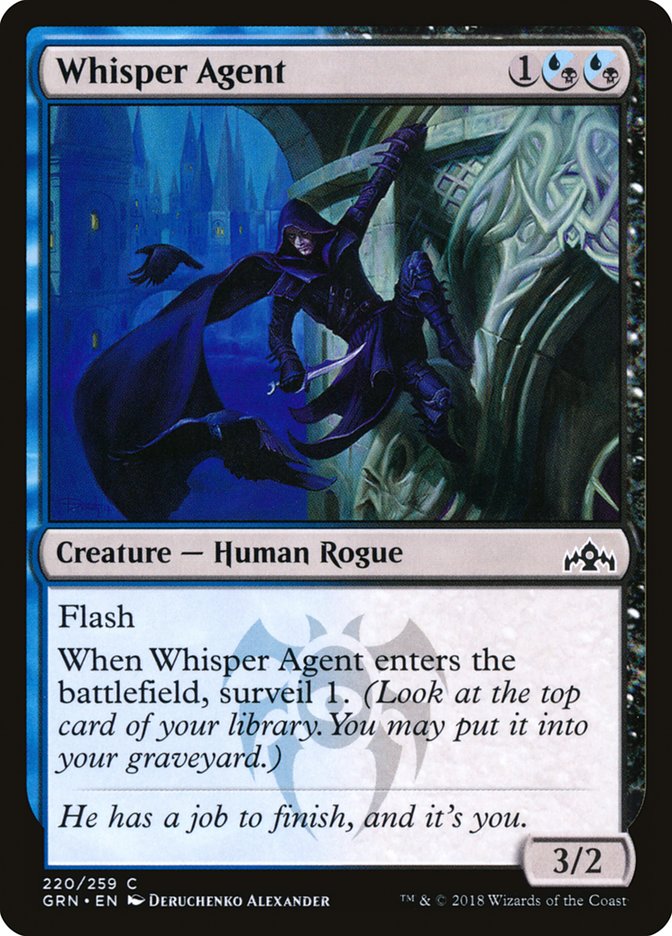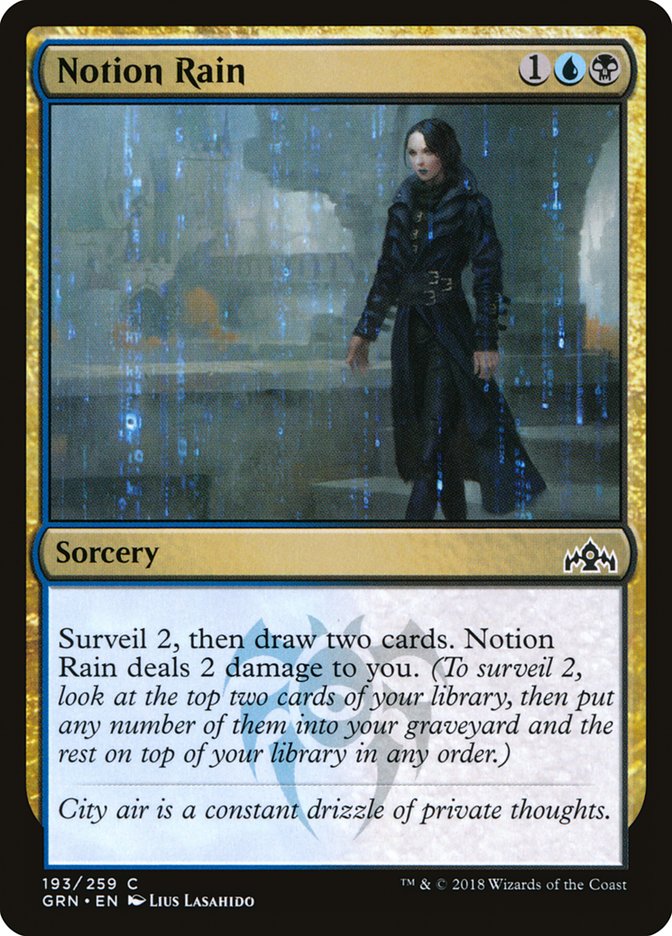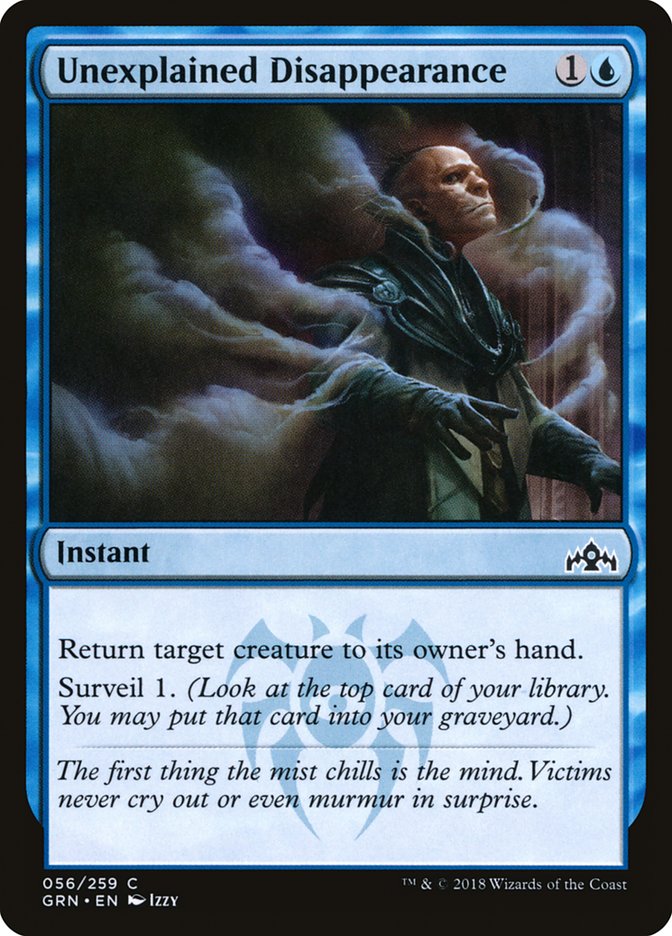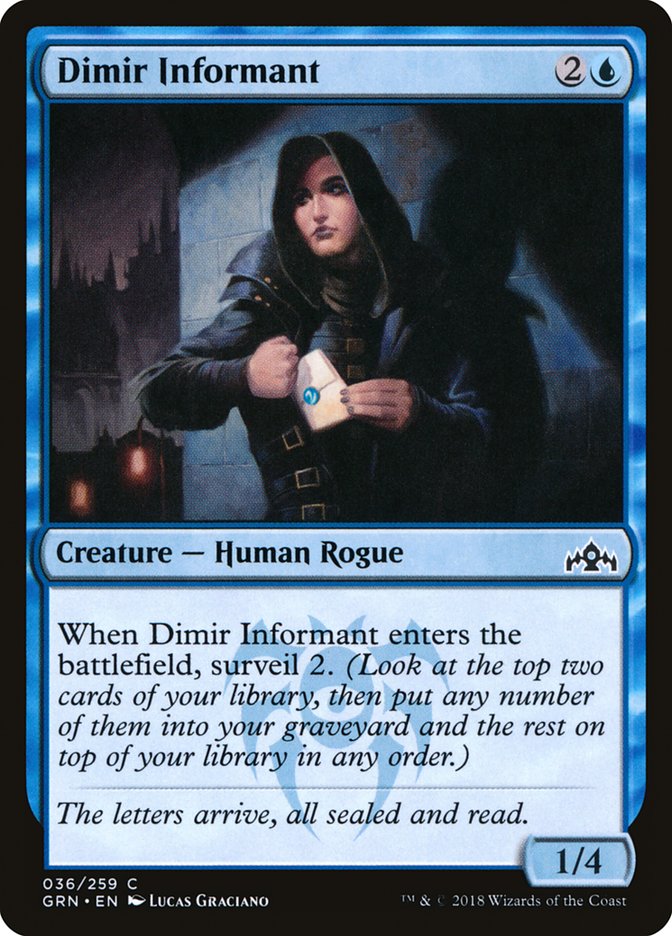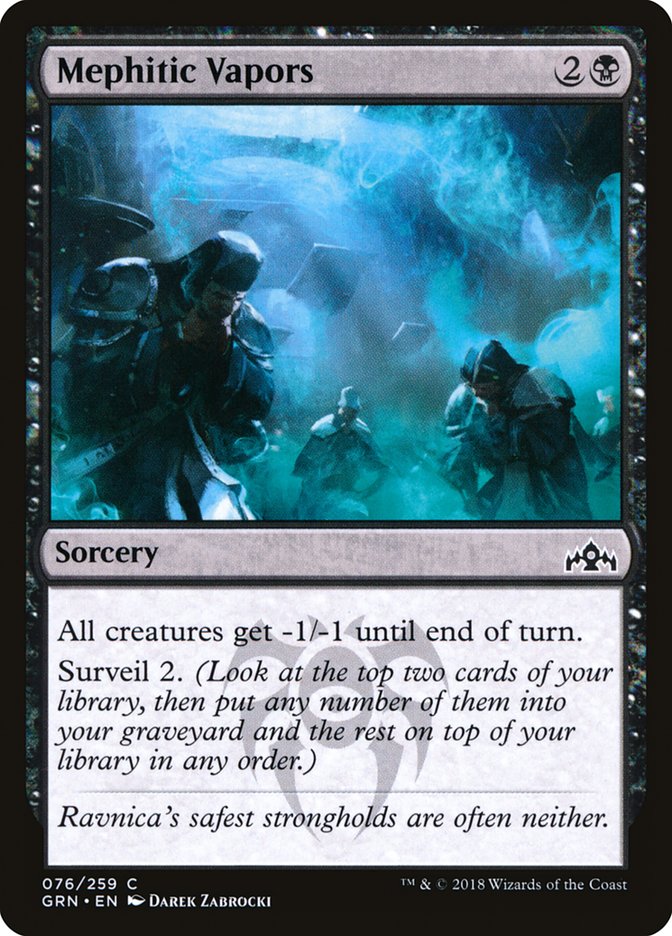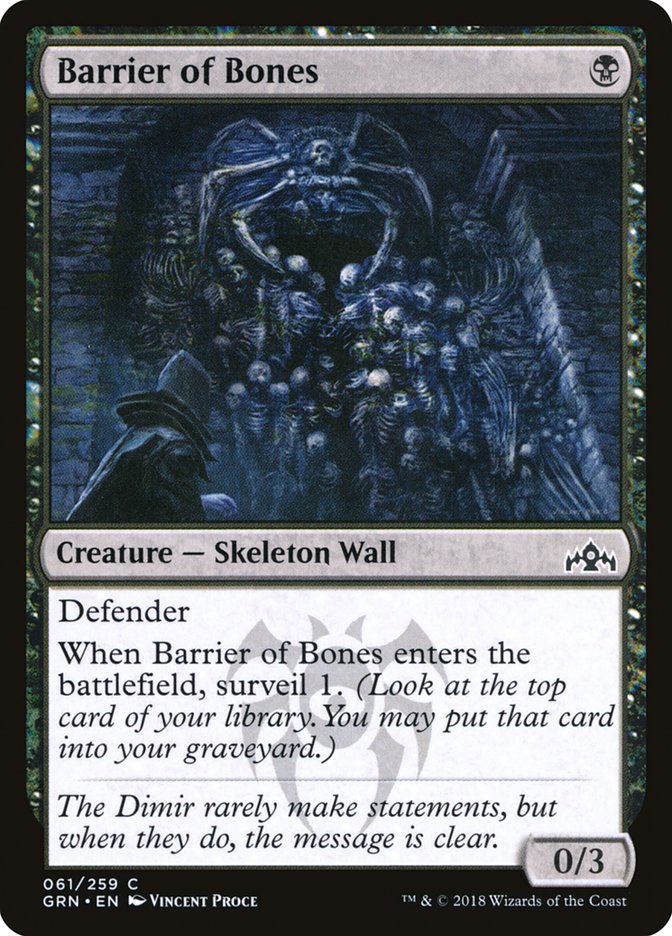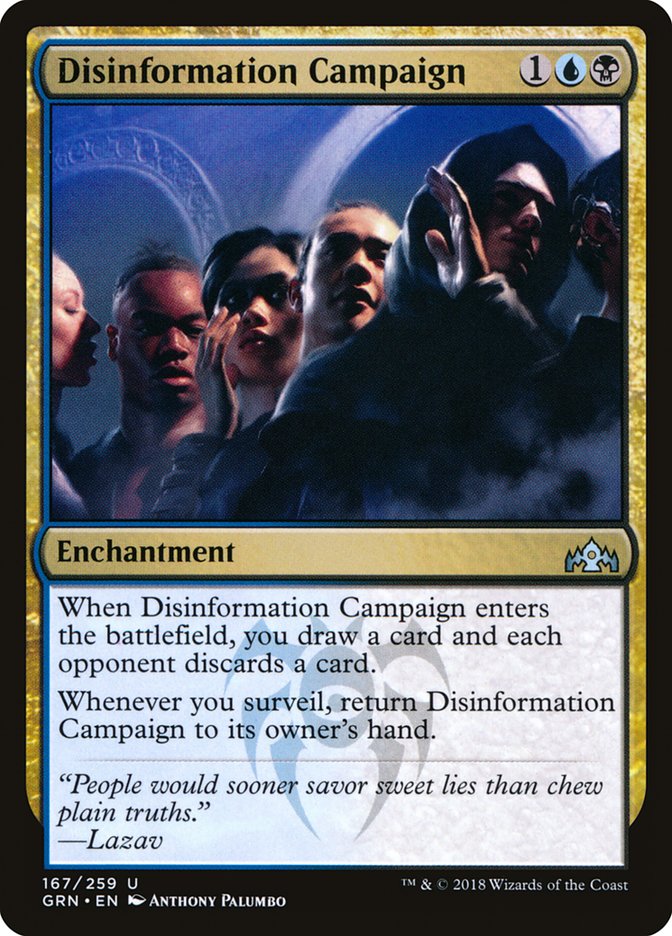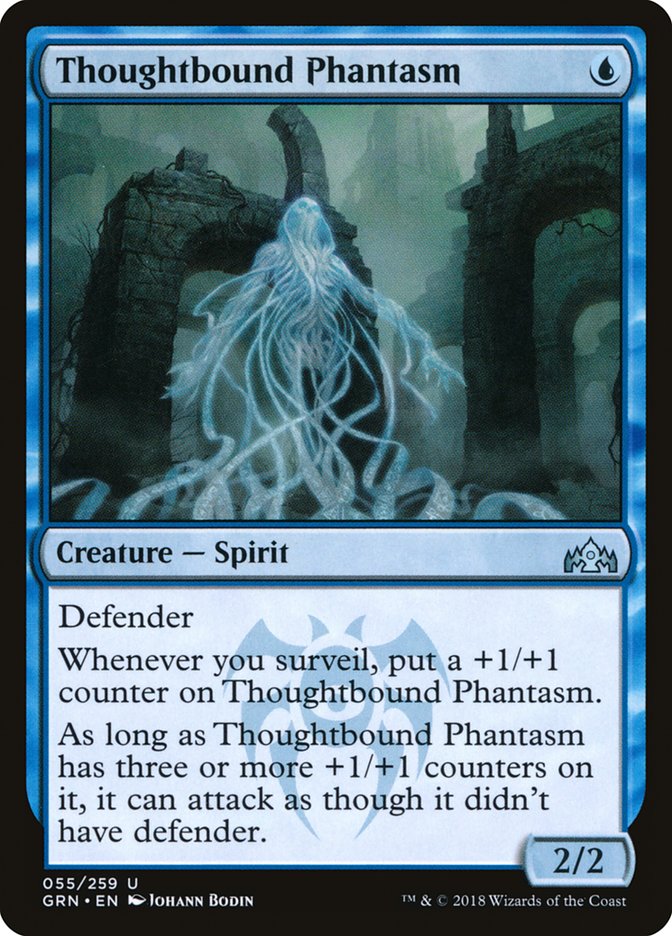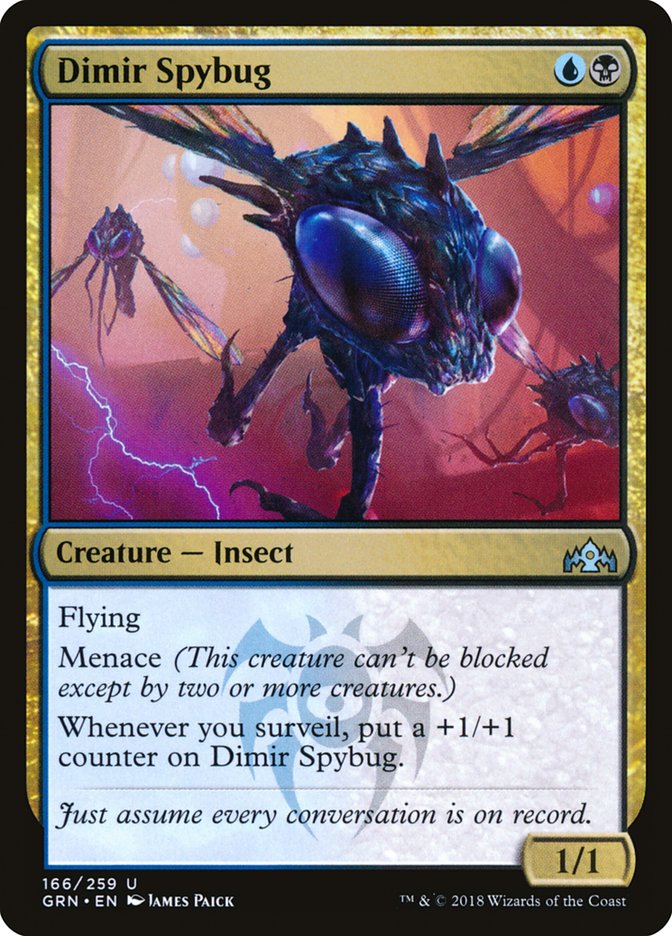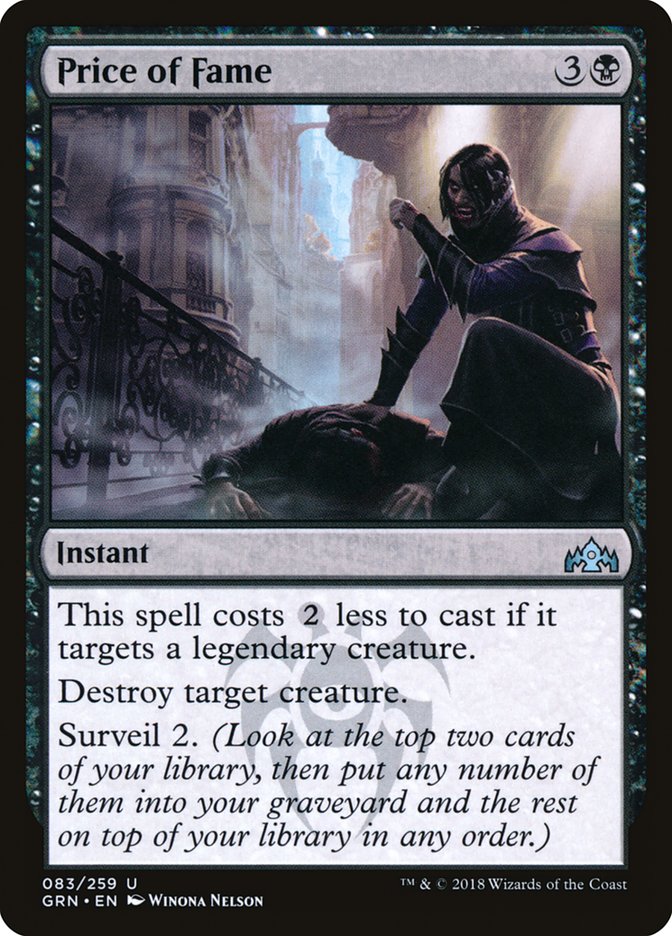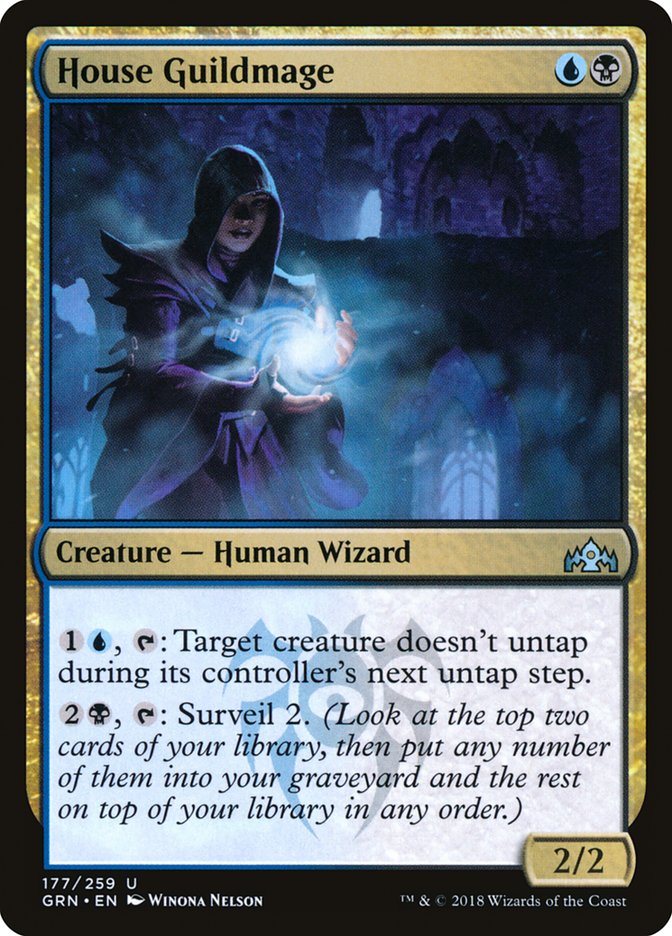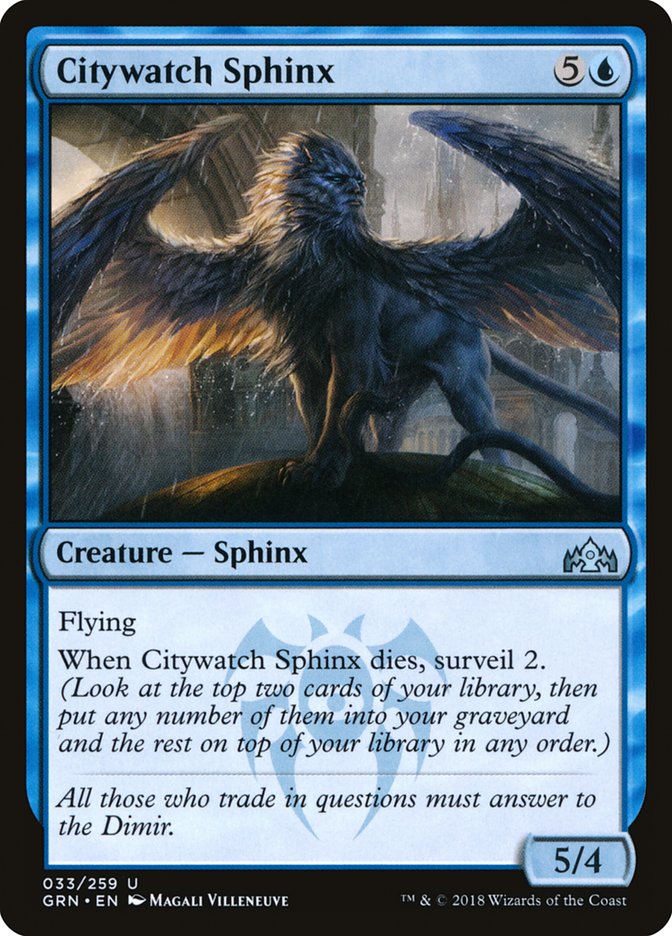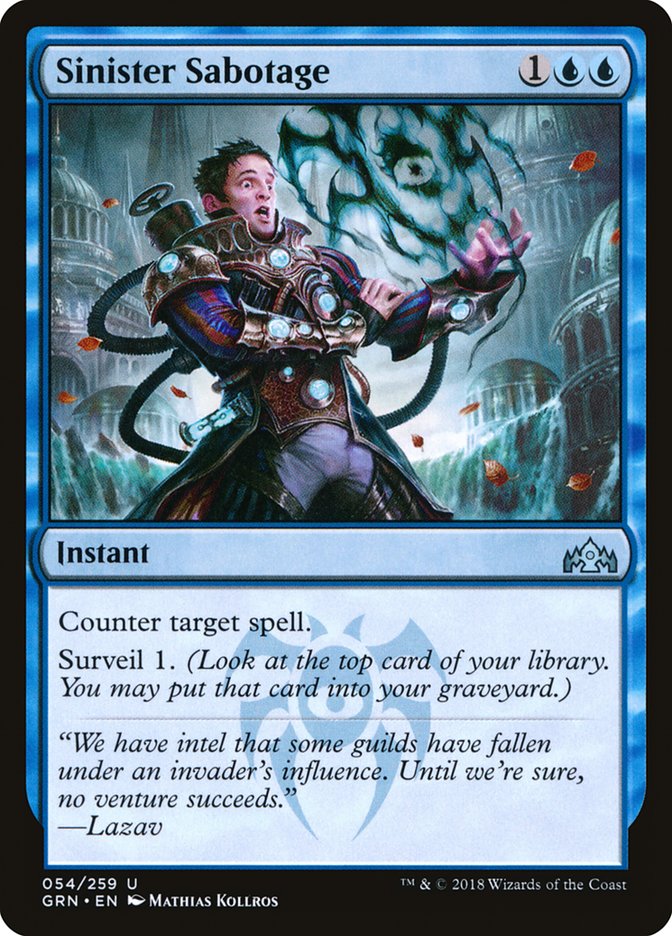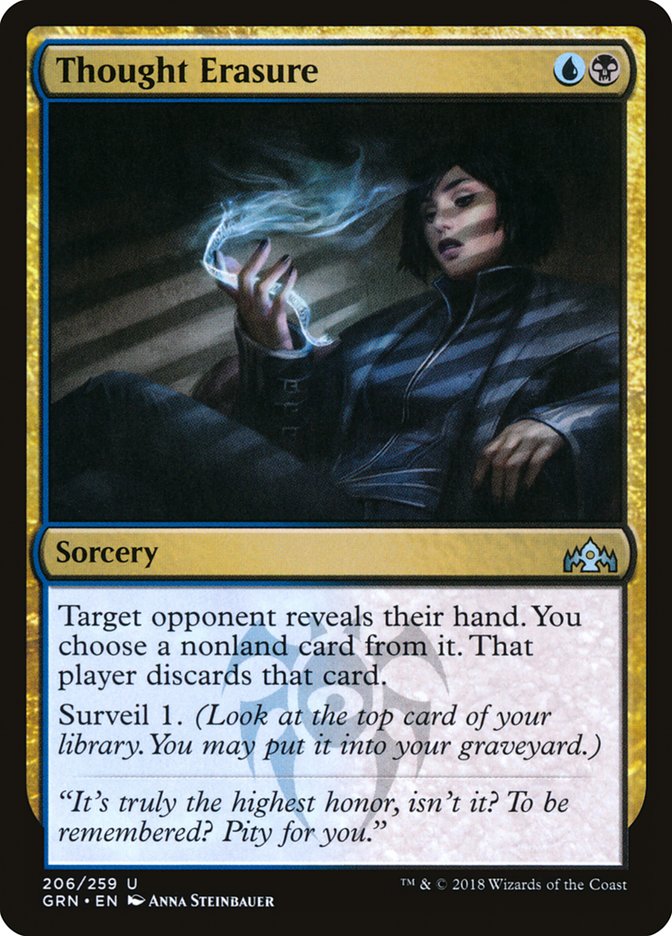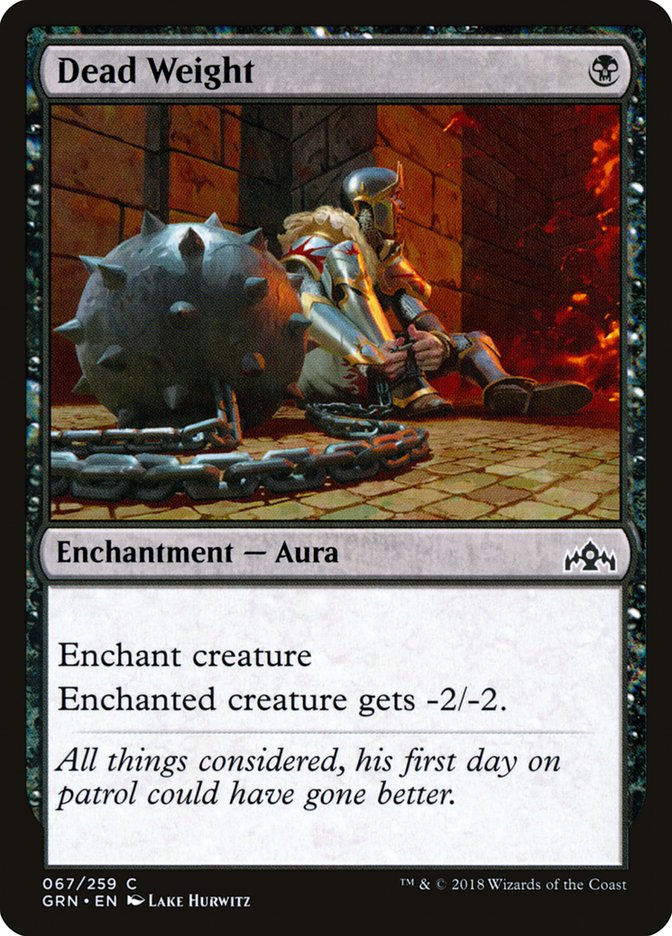Going into Guilds of Ravnica Limited, Dimir was the most hyped
guild. The key mechanic, surveil, has an abundance of powerful build
arounds and the Prerelease showcased some dominating Dimir decks. But the
secret is out now about Dimir, and it’s very rare for a pod not to contain
multiple Dimir drafters. The card quality is high, and there are so many
first pickable cards that incentivize drafting Dimir. Luckily, there’s such
a high density of good Dimir cards that each table can happily support two
Dimir drafters.
Soooo Disinformation Campaign is completely busted and I will
not be passing it in #MTGGRN
draft— Ryan Saxe (@rcsaxe) September
28, 2018
I want to make sure that everybody is aware of how absurd Disinformation
Campaign is. If you haven’t had the opportunity to play with the card, I’m
sorry, and if you’ve had the misfortune of playing against it, I’m also
sorry. It keeps the cards flowing while placing an incredibly large strain
on your opponent’s resources. Casting the card once is card advantage, and
drafting an abundance of cards with surveil isn’t a difficult feat to turn
Disinformation Campaign into one of the best engines in the format.
But there’s a lot more to do in Dimir than mislead your opponent with
Disinformation Campaign. Let’s take a look at all of the cards surrounding
surveil at common and uncommon.
Note: the cards listed are ordered from left to right by order of
importance to the archetype.
Common Payoffs
Darkblade Agent pulls me towards Dimir. The card is powerful, but I’m not
taking it over high quality commons such as Watcher in the Mist.
Good Commons
These are cards I’m willing to take early in a draft. Note, I’m happy to
first pick both Watcher in the Mist and Deadly Visit but not the other two.
Filler Commons
These are cards that usually make my surveil decks but I don’t want to take
unless I’m already going down that path.
Other Commons
These are cards that have made my deck before but are usually relegated to
the sideboard.
Uncommon Payoffs
All these cards I’m happy to first pick because they’re very important for
optimizing the Dimir archetype. I have excluded Whispering Snitch because I
have not been happy with the card. It can be good but is a card I would
rather get on the wheel and would not consider it a payoff.
Good Uncommons
These cards are all first pickable and can be very potent in Dimir.
Especially Nightveil Sprite, as that card is arguably the best engine for
repeatable surveil.
Solid Uncommons
All three of these cards are solid, and I’m happy to have them in my deck.
Both Sinister Sabotage and Thought Erasure looked mediocre at the beginning
of the format but have proven to be good in any Dimir deck.
Filler Uncommons
There are none. That’s right, every uncommon with the surveil mechanic is
above par.
*
As you can see, there’s an abundance of high-quality cards available for
this archetype. Furthermore, this is backed up by a ridiculous amount of
removal. On top of removal spells with surveil like Price of Fame and
Deadly Visit, Dimir has access to Dead Weight, Artful Takedown, Capture
Sphere, and more. This means that the archetype has two main avenues to
victory. The first is to utilize card quality combined with the card
selection from the surveil mechanic to win the long game. And the other is
to play a couple creatures and then cast interactive spells for the rest of
the game. One of the most powerful aspects of Dimir is that good versions
of this deck can play both games reliably.
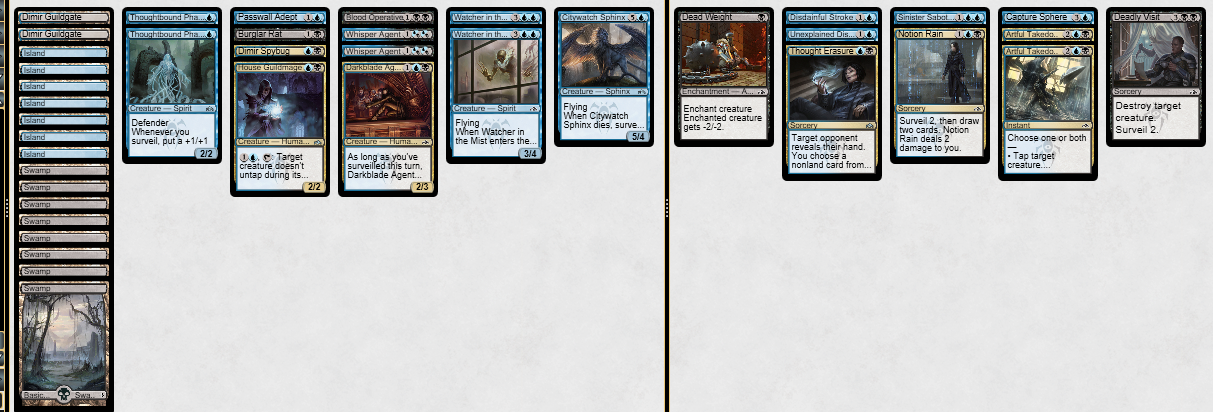
Two copies of Thoughtbound Phantasm really enable this deck to function on
multiple axes. The Phantasm functions as both a good early defensive play
and a threat. Against the more controlling decks, it presents a ticking
time bomb, where against the more aggressive decks, it’s a well-sized wall.
Playing creatures early on followed by interactive spells is an easy route
to victory, but in the right matchup, you can aggressively trade off these
creatures because this Dimir variant has very solid lategame and sources of
card advantage.
The best Dimir decks, as I’ve mentioned above, are capable of playing both
roles. Sure, you can draft a version with a minimal number of win
conditions and multiple copies of Devious Cover-Up, or even Enhanced
Surveillance, to make sure you don’t lose to drawing your entire deck, but
I’ve found those versions of Dimir to get better when they contain more
ways to win the game. I will note that I’m a fan of what I call “Cover-Up
Control”, which are Dimir or Izzet decks that utilize Devious Cover-Up as a
win-condition, but those are not the common variants of this archetype.
Furthermore, the win conditions you have access to can really alter the
texture of your deck.
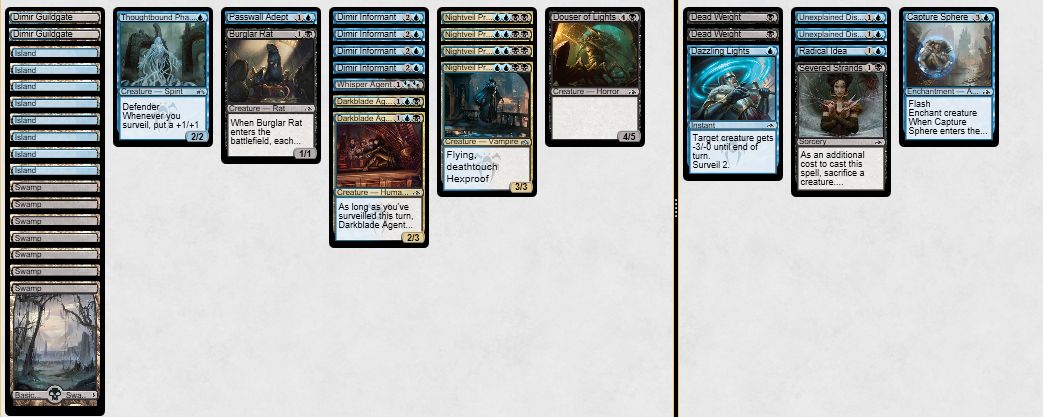
While this deck only went 2-1, I do feel as though it was strong. Four
copies of Nightveil Predator is an anomaly, but it’s important to
understand how and why something like this alters how you can build your
deck. Since there’s an abundance of removal in the format, games sometimes
turn into a fight of who can run the other out of win conditions first. A
win condition with hexproof drastically shifts this dynamic and puts the
onus on the opponent to take action in order to not lose. This means I can
include a density of defensive creatures and only need to put immense focus
on covering the early game. So, while I think the best versions of Dimir
are capable of curving out, if you can draft enough resilient threats (most
of which are rares), you can have a great Dimir deck that doesn’t play on
this axis.
This means that when drafting Dimir, keeping track of both the quality and
the quantity of your win conditions is of the utmost importance for
decision making during the draft. Picks in pack 3 are often dedicated to
filling the taxonomical holes your current pool has for the Dimir
archetype. Does it have the requisite number of early plays to help sure-up
the aggressive matchups and enable winning via curving out? Are the
creatures resilient, or do you need to prioritize more threats? What’s your
current density of surveil cards versus surveil payoff? Do you need more
interactive plays?
All these questions play an instrumental role in navigating the end of your
draft. Pack 1 Pick 1, I will take Dead Weight over Watcher in the Mist, and
I don’t think it’s particularly close. But in Pack 3, that pick is entirely
dependent on what my current pool is lacking. If you draft a Dimir deck
that’s lacking in one of the departments I’ve described, your deck has a
vulnerability. And that vulnerability will become more and more relevant as
the game progresses. In fact, the one loss I picked up with the four
Nightveil Predator deck was because there was only one card capable of
removing a creature with greater than two toughness from the battlefield in
Severed Strand. I couldn’t compete with Beast Whisperer out of Selesnya,
and they ran me over. Without that card, the games weren’t playing out
closely, but there was nothing I could do to fight that sheer amount of
card advantage. Counterspells and hard removal like Deadly Visit would have
gone a long way, but my deck didn’t have access to these and lost a match
because of it.
Overall, Dimir is mostly a defensive deck, but don’t be afraid to assert
yourself as the beatdown should your curve enable this. When Dimir curves
out, the quality of removal really propels the game into your favor. While
it isn’t my favorite archetype, it is one of the best and you should be
familiar with both drafting it and playing against it. I’ve won games
versus Dimir by understanding that my best avenue to victory is running my
opponent out of cards and countering their copy of Devious Cover-Up should
they have it. Similarly, while playing with Dimir, keep in mind when you
need to turn the corner, especially if your opponent is at a high life
total. Games can go long, but you’ll often have a higher density of spells
to cast thanks to the card selection that surveil provides.
I’ll leave you with arguably my best Dimir deck I’ve had in this format. It
contains pretty much everything discussed here. A variety of cheap surveil
payoffs, good removal, resilient threats, and even the Devious Cover-Up
package. This deck didn’t drop a game, and if you want to watch the matches
and draft,
I streamed them on Tuesday!
